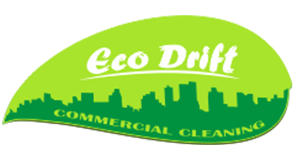The hybrid working model is on the rise and now facilities management services are having to adapt at a record pace to foster a hot desking policy that works with space and hygiene standards. In today’s blog post we want to help you understand the impact of hot desking on cleanliness and how to create a cleaning policy that keeps everyone happy.
What is hot desking in a hybrid working model?
Essentially hot desking is a flexible office arrangement that allows employees to move about the office to find areas that suit their working patterns, meetings and comfort. The idea is that staff will take their technology with them around the space so that they can work seamlessly throughout the day.
Whilst open plan offices became popular in the 1960s, it wasn’t until the late 1980s and early 1990s that hot desking became a trend. The problem for most businesses was that technology didn’t allow for such flexibility. Fast forward to the 2000s and hot desking became a trend again, because of the rise in remote tech devices and co-working office spaces for freelancers and solopreneurs.
During the Covid-19 pandemic, hybrid working became a wider option for much of the UK’s workforce, with businesses choosing to adopt the idea over the long term. In fact, there are still many businesses operating a hybrid work pattern today.
Consequently, facility management services are now offering more hot desking models in their office spaces.
Pros and cons of hot desking for facility managers
What are the pros and cons of operating a hot desking space as a facility manager?
Pros
- Empty units can become co-working spaces with multiple monthly rental incomes
- Smaller office footprints are easier to set up and maintain
- Reduced operating costs compared to a larger furnished office space
Cons
- An expense in hardware and space redevelopment
- Hosting a chaotic environment with more security needs
- Increased germs and cleaning needs
What is the impact of hot desking on hygiene and cleanliness?
The main issue with increased footfall in or out of office spaces is the spread of germs. There’s no getting away from that.
We already know that desks can harbour 10 million living bacteria, making them 400 times dirtier than toilets! Staphylococcus is the most common virus detected on desk spaces and transferred through touch by skin-to-skin or skin-to-object.
[Want to know more about workplace germs? Read our guide to the 5 workplace areas where germs can grow really fast!]
It’s hugely important then that we create a commercial cleaning protocol that fits a new hybrid working policy.
Your hot desking cleaning policy for a hybrid workforce
Once you have considered your new working space you must decide how to manage it from a cleaning stance, as this will make finding your perfect commercial cleaning partner easier (Hello Reading and Hampshire!)
Step 1 - identify your key workstations (or working zones)
As you built your co-working space you will have considered zoning. Go back to this concept and think about how easy it will be to keep clean. Yes, of course, you are paying for cleaning, but why pay for more hours, when there’s a more productive approach?
Step 2 - map out likely foot traffic and touchpoints
How are people moving around your office as they come in and out of the space? Sometimes that is hard to imagine when you are building out your office, but this can be revisited regularly, just by pure observation and rental surveys.
Make sure to record your traffic footpath, so you can include notes for your commercial cleaning operatives.
Step 3 - zone in on desk space
Whether you are going for a desk stacking, or free movement policy within your hybrid working space, the desks themselves need to be considered from a cleaning standpoint. You need to understand what equipment you provide and what objects will likely be introduced to a desk space.
What are the touch points and how do you keep them as clean as possible?
As well as employing a cleaning agency, it might also serve you well to have cleaning stations at each desk space. This could be a small box of cleaning supplies or wipes that sits under each desk space, allowing renters to deploy a “clean before you leave” policy.
Step 4 - create an office equipment inventory
There will always be areas of the office where you supply equipment. Make a note of these and provide guidelines for your cleaning company.
Step 5 - document hot desking guidelines and expectations within your rental agreements or work policies
We cannot expect hybrid workers to know our general cleanliness and cleaning protocols unless we tell them. Providing training is a great tool to do this. This could be a simple document handover and even an office tour with cleaning highlights thrown in.
Simple hot desking inductions can help cement simple safety guidelines.
Desk cleaning tips for hot desking in the hybrid working model
Once you are set up and staff are working it is a good idea to think about how cleanliness and hygiene can be maintained. Here are some tips to help you.
- Have a daily cleaning schedule with your commercial cleaning company
- Invest in 4D cleaning to kill more germs
- Prioritise desk spaces and communal areas
- Provide hand sanitiser points throughout the office
- Provide easy-to-wipe trays at each desk for personal effects
Final thoughts on hot desking cleanliness for facilities management
Whether you are already offering hybrid workspaces that allow for hot desking, or you are just now considering it, it is important to understand cleanliness. Germs can spread rapidly throughout office spaces and staff downtime can have a big impact on business.
Considering how you operate a hot desking space and the cleaning standard you need to maintain has to be a top priority for effective facilities management.
In the Reading and Hampshire area? Need some help cleaning your hybrid working space? Contact us today!


